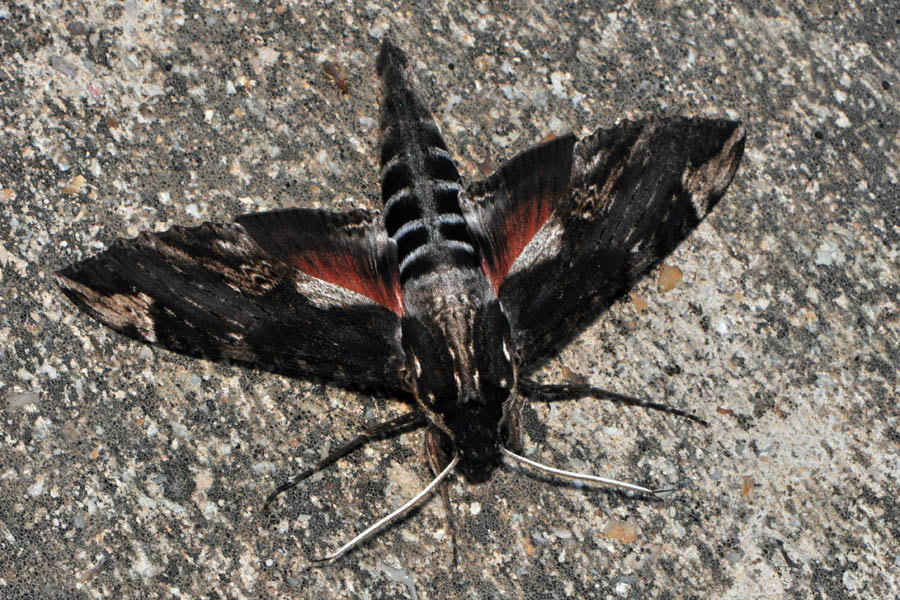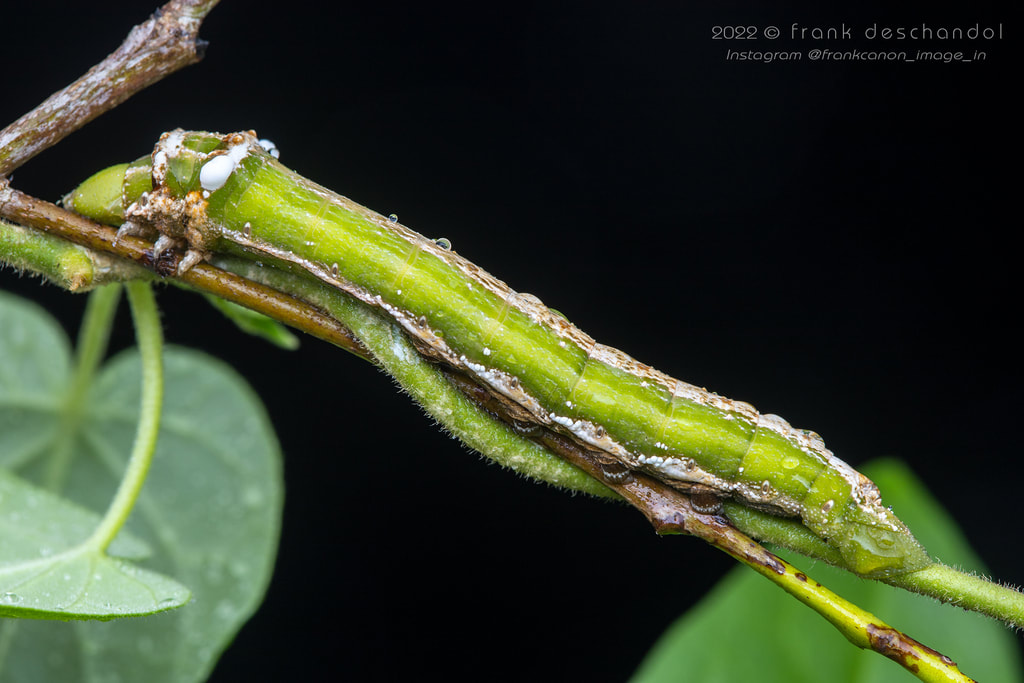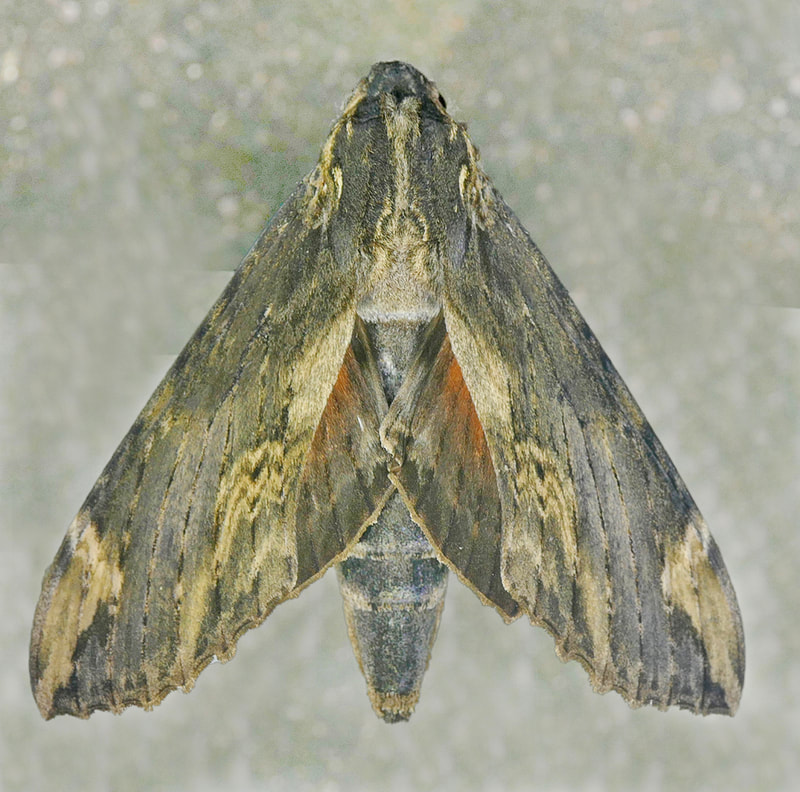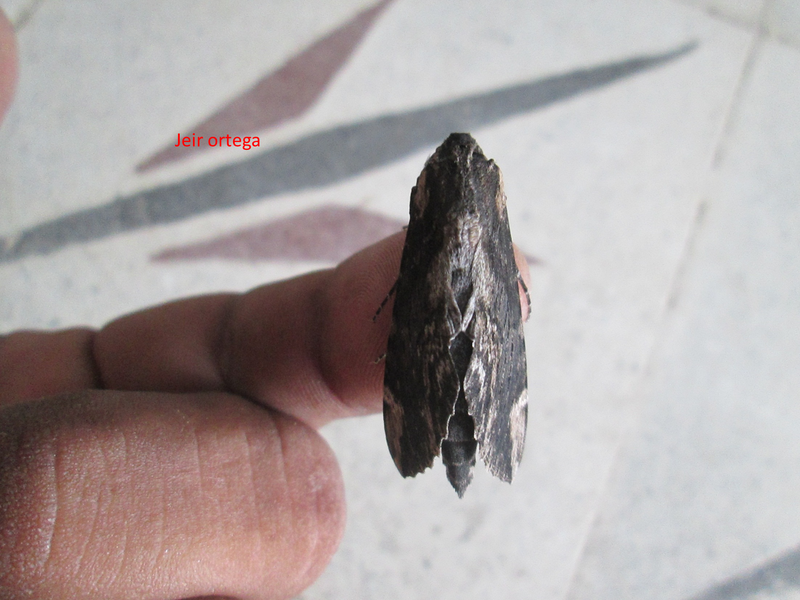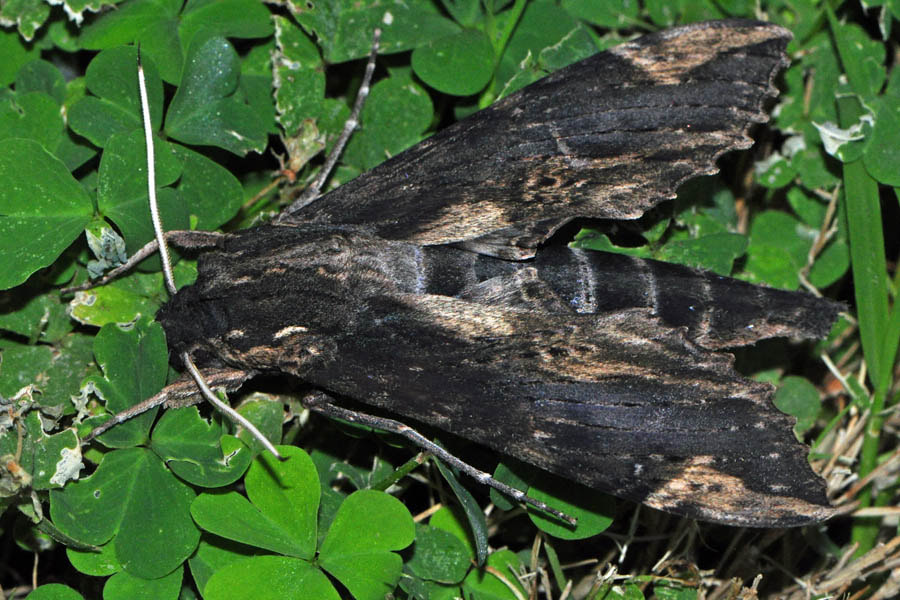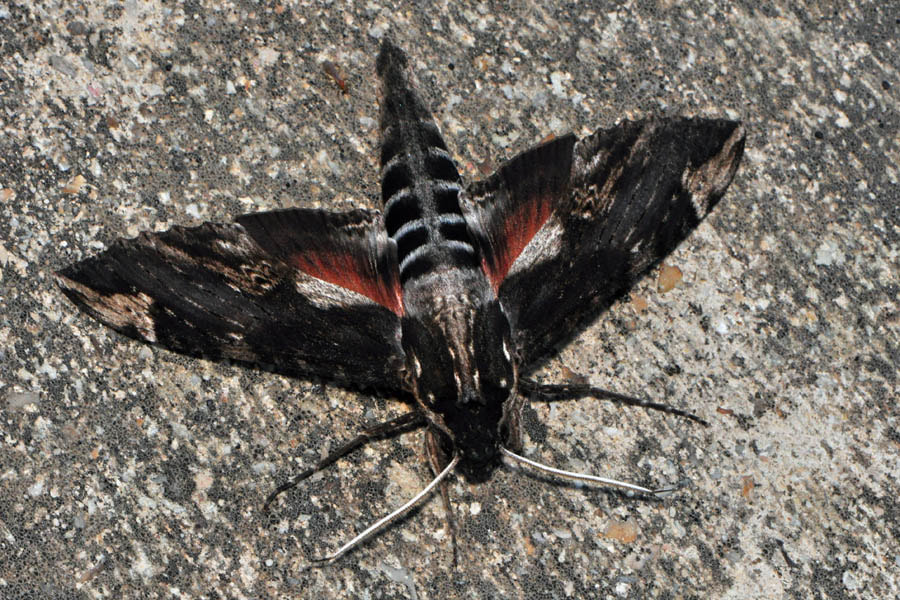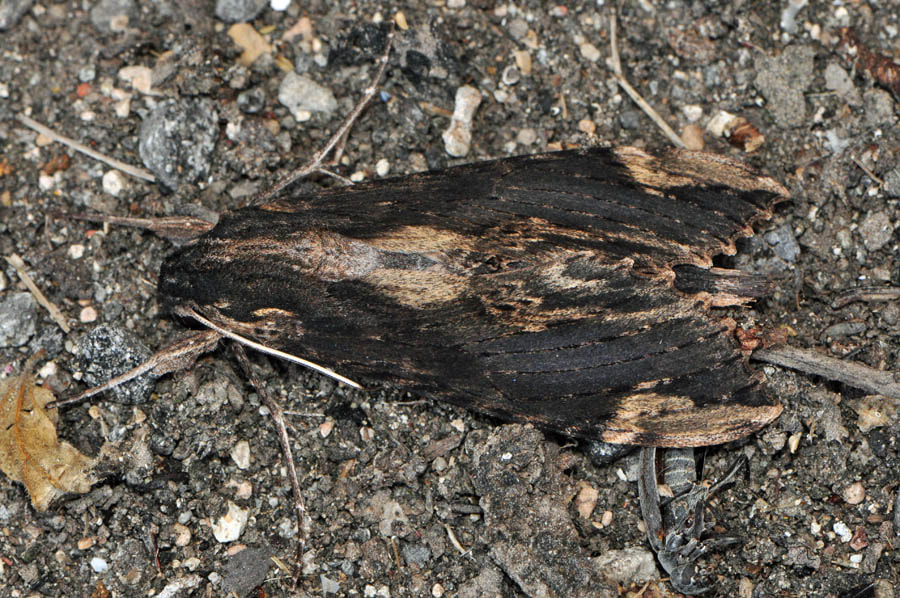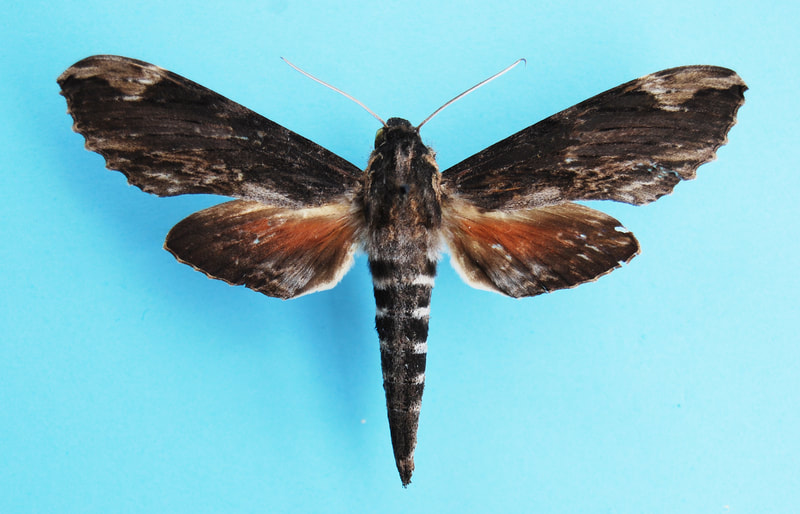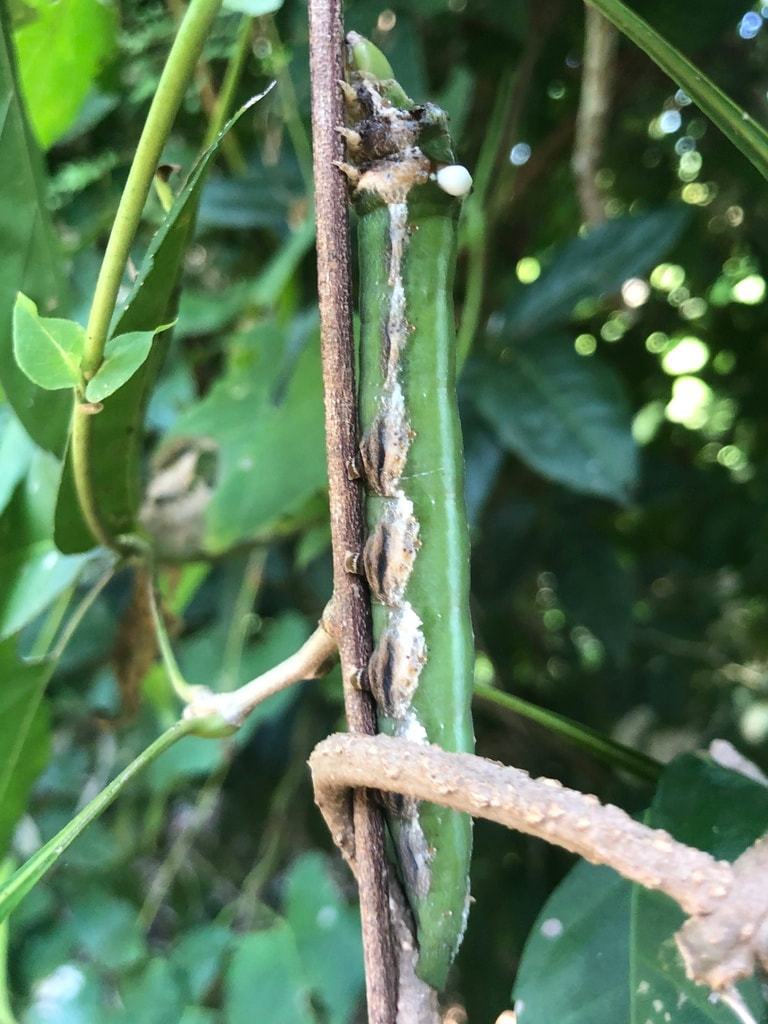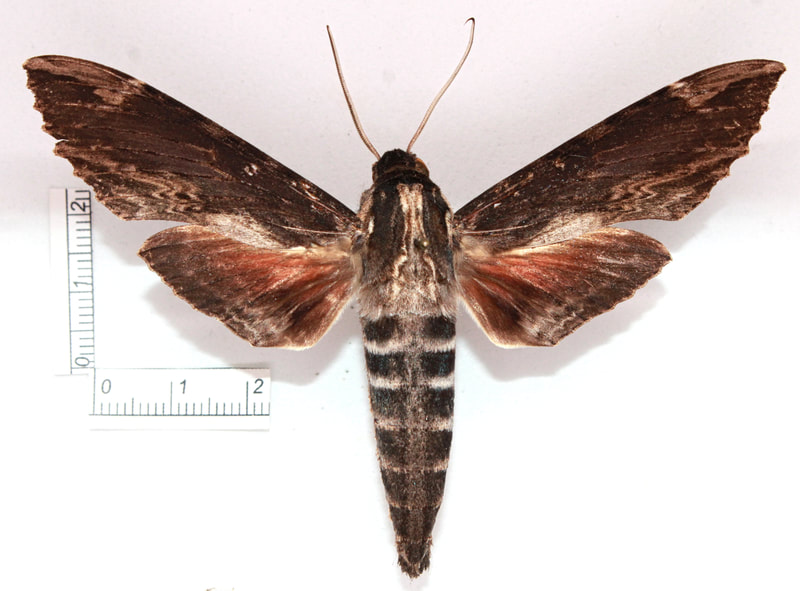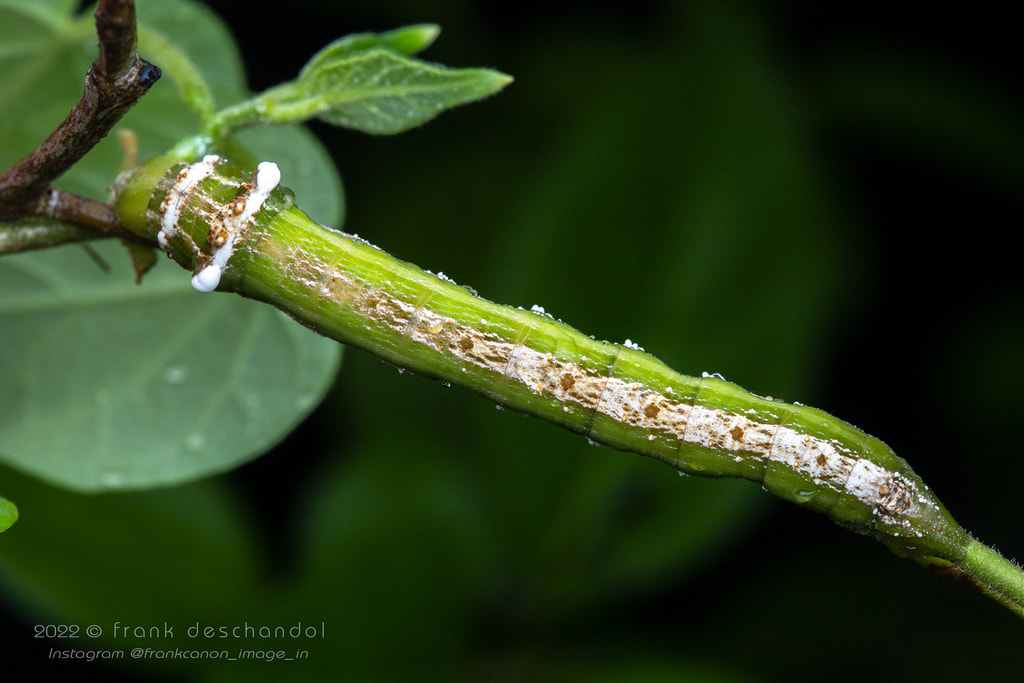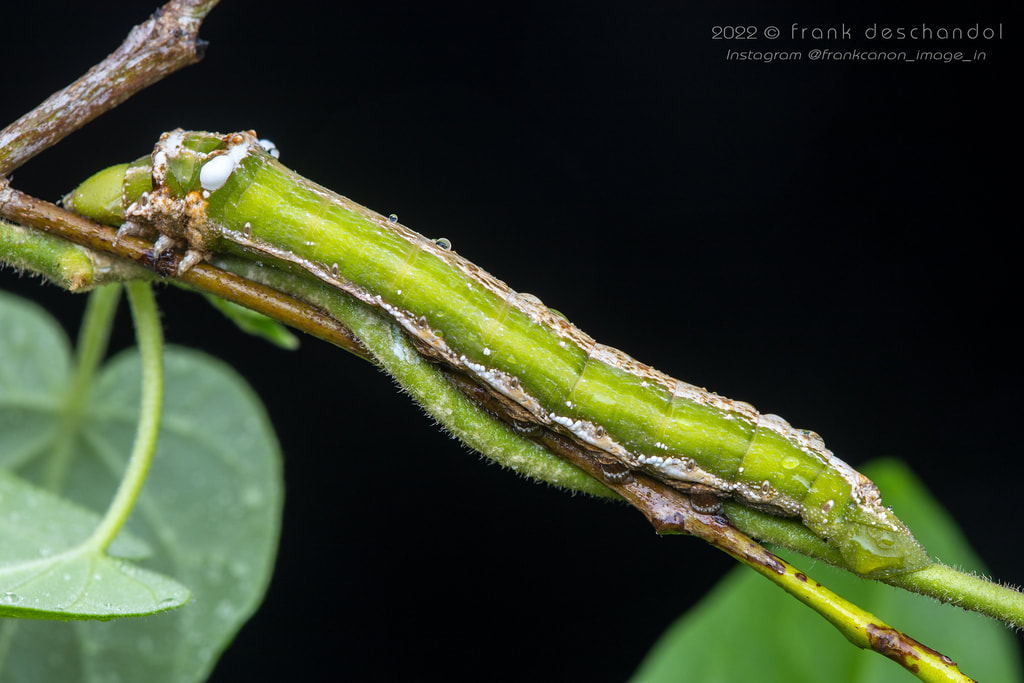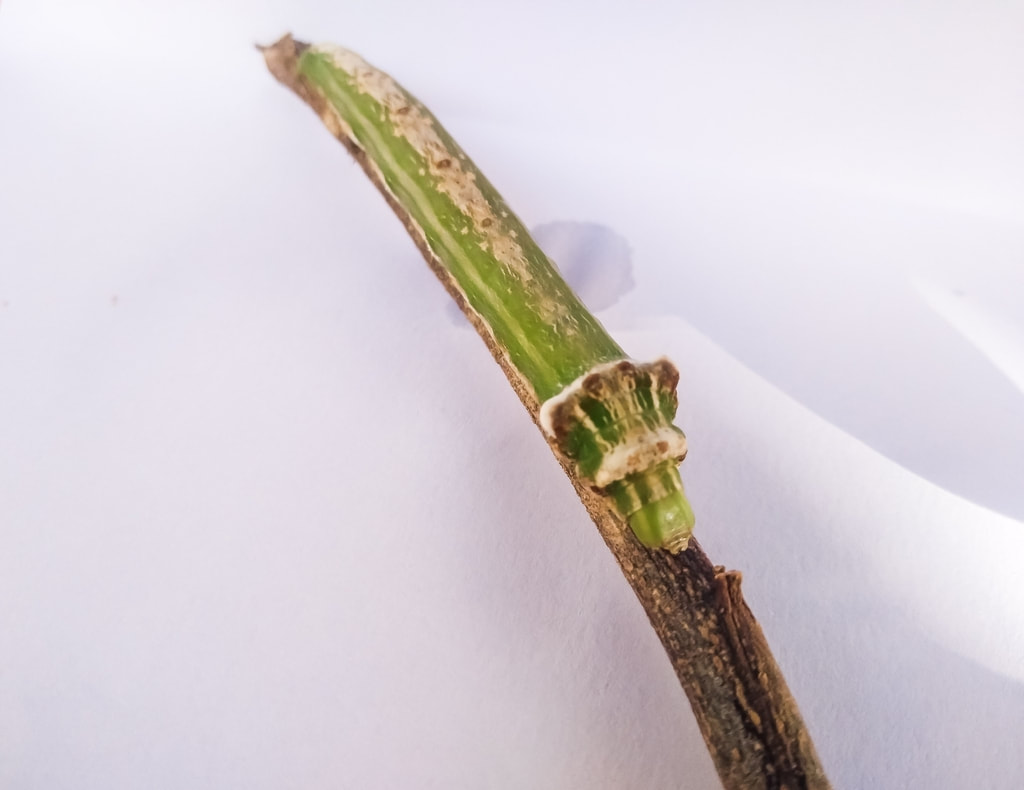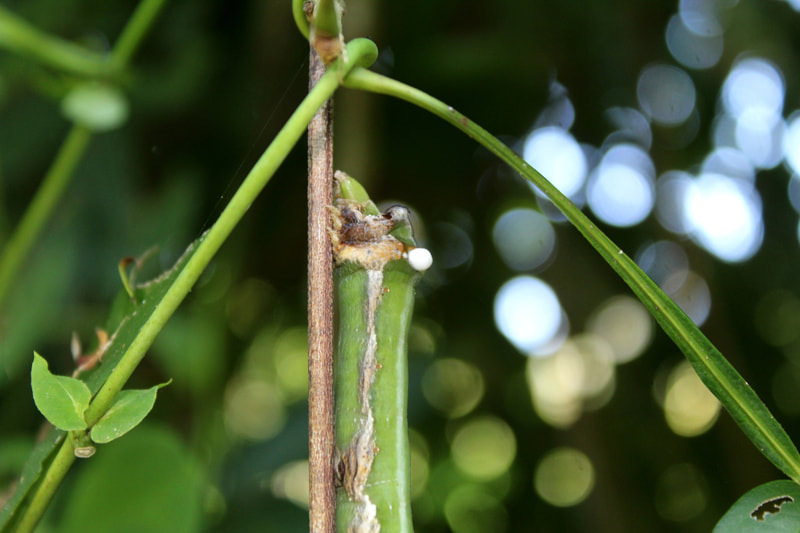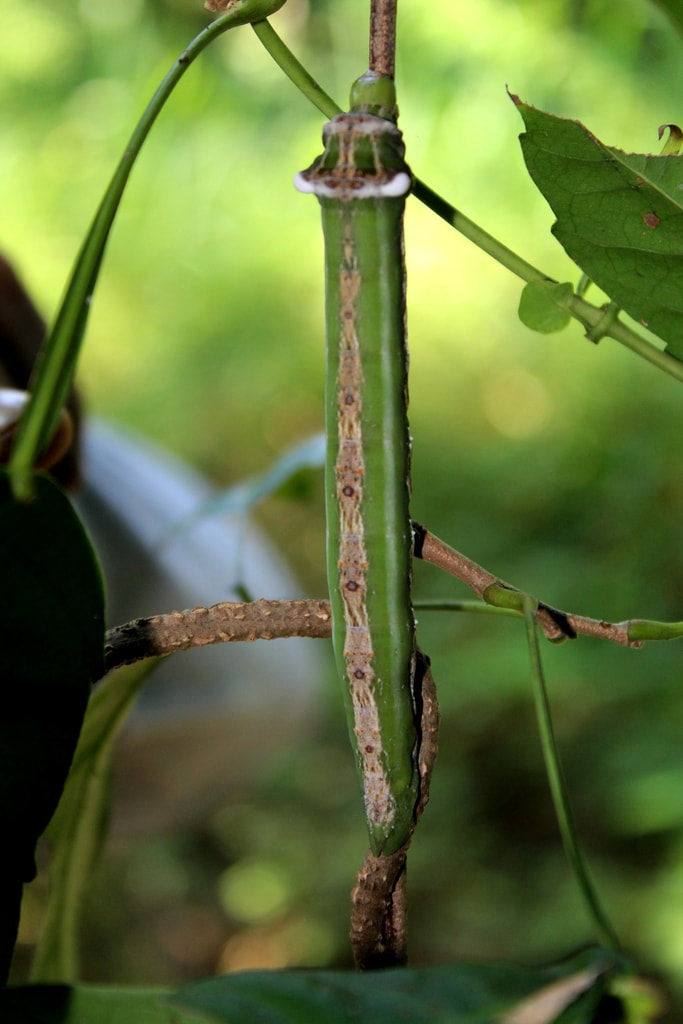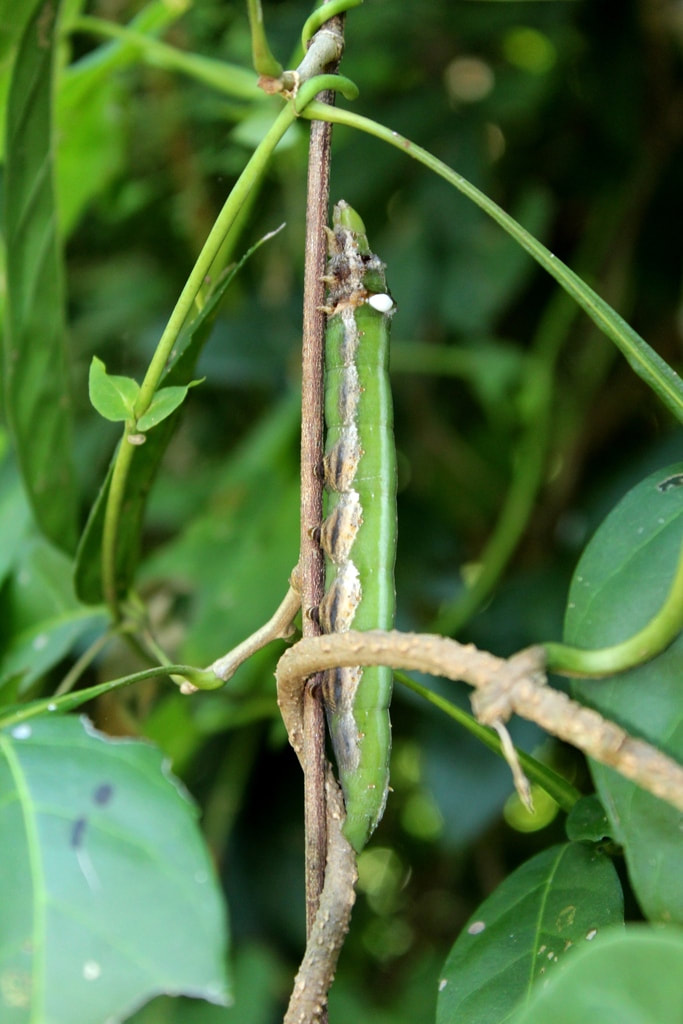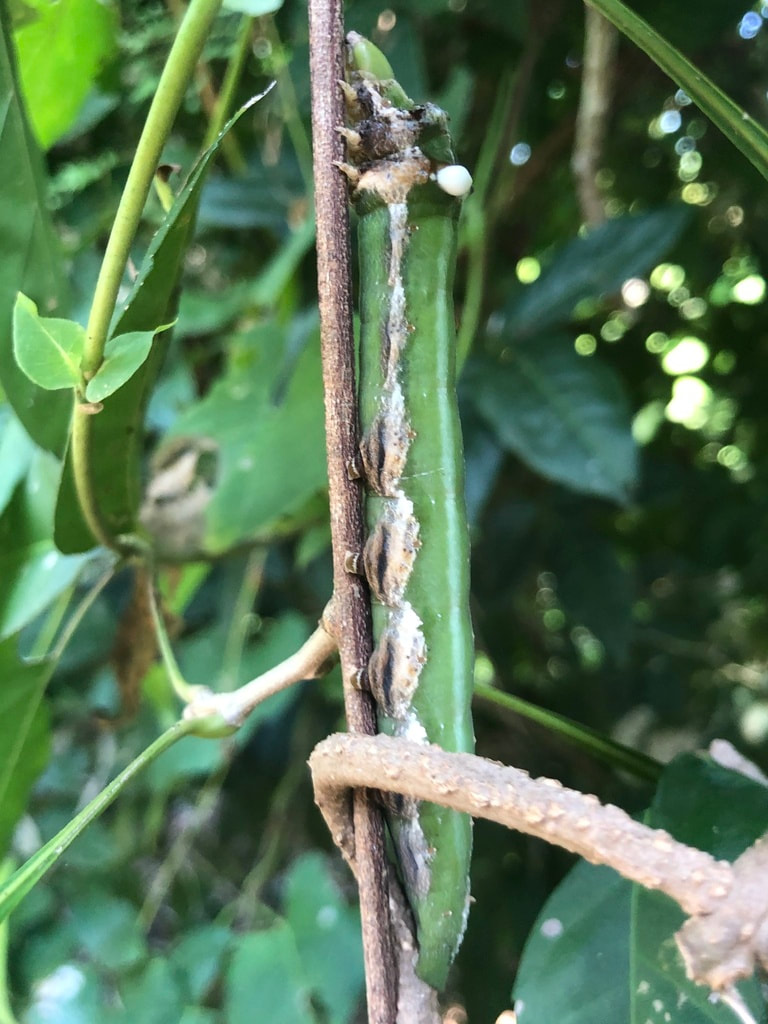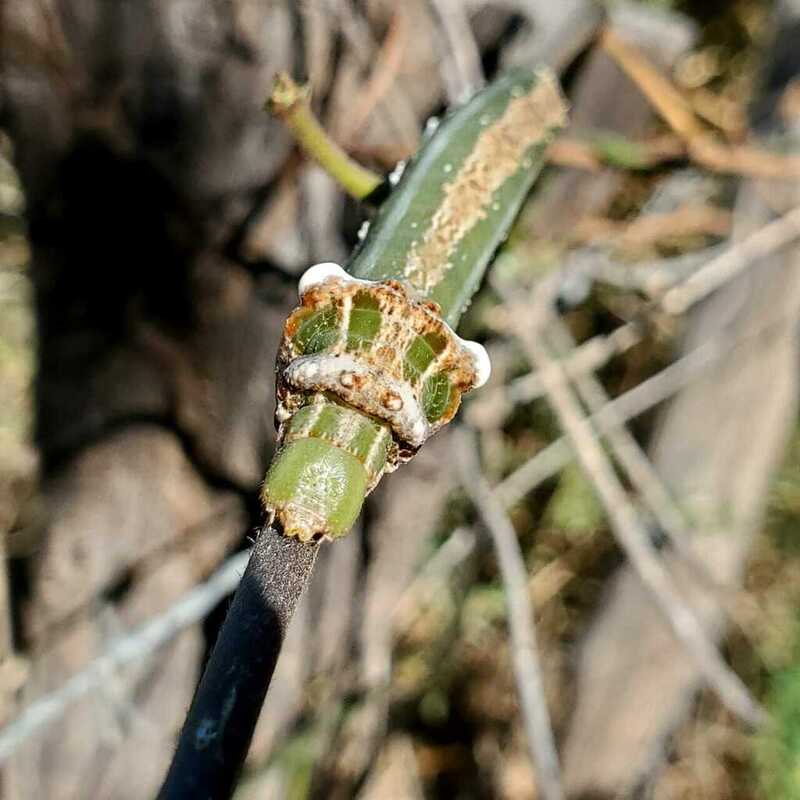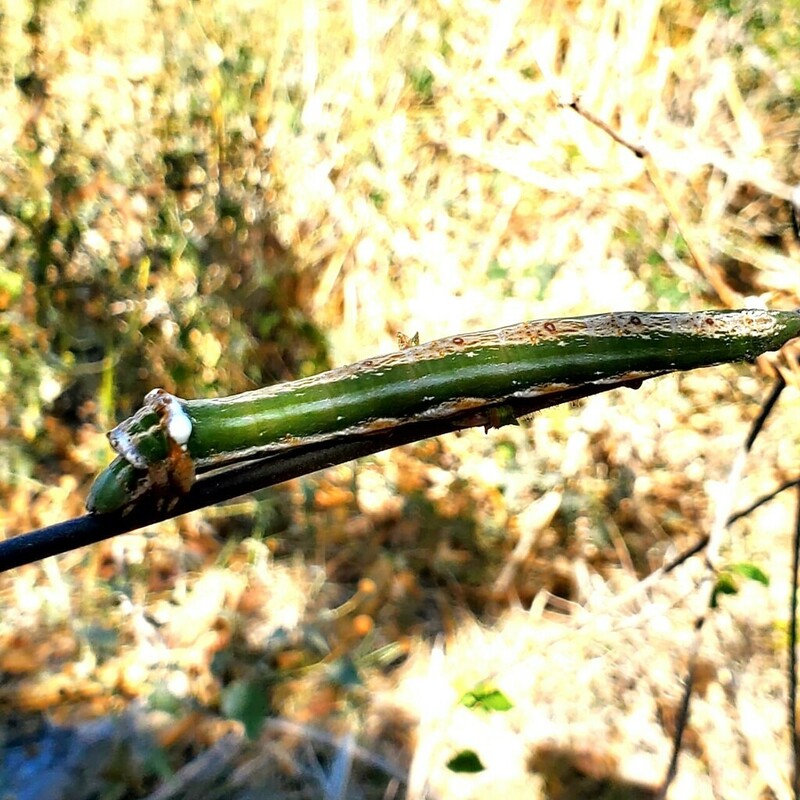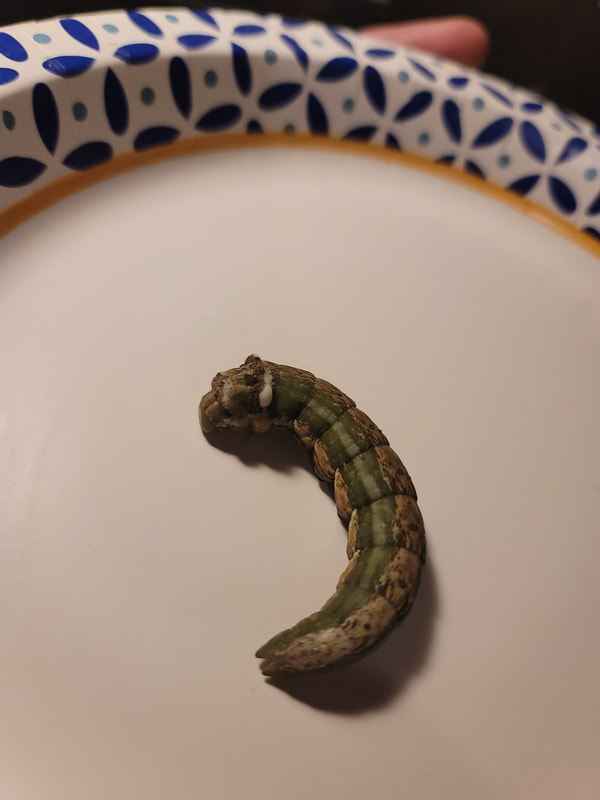|
Common Name: Lassaux's Sphinx
Ecology and Life History: This moth is active nearly year-round in South Texas and Florida. It is most likely to be encountered in the Spring or Fall in Texas (2). This moth is attracted to light and both sexes will come to artificial light. Bait or other methods are ineffective for attracting this species. This species is not sexually dimorphic, though females are generally larger than males. Females also have a slightly larger, rounder abdomen. Eggs are laid on the leaves and stems of hostplants (Asclepiadaceae). Young larvae likely feed on the undersides of leaves. Older larvae almost certainly hide on the vines as their coloration is perfectly suited to it. Habitat and Searching for Larvae: Larvae consume the leaves of climbing milkweeds (Asclepiadacae) (2). Larvae can be found virtually anywhere on the plant, younger instars likely prefer new growth. Other species in the genus show no preference for new growth in the later instars, and likely this species follows suit. In the USA, this moth is restricted to South Florida and South Texas. In Texas, it can be found in urban areas, suburban areas, fields, edges, and woodlands. In Florida it is more associated with suburban areas and hammocks where its hostplants are found. Larvae, if present in the USA, can likely be found nearly year-round. The two peaks noted for adults in Texas are Spring and Fall, which means that larvae would be found in late spring to summer and then again in the winter to early spring. It is currently unknown if this species breeds within the USA. It is not known if this larva fluoresces under UV light. Given that other members of the genus do fluoresce, this species likely does as well. Rearing Notes: {COMING SOON} Host plants: Click here to load this Caspio Cloud Database
Cloud Database by Caspio |
Adult Description: A medium sized sphingid with forewings measuring 38-44mm (2). The forewings are dark brown with a lighter brown area in the apex and basal areas of the forewings. This immediately separates it from almost every member of the genus except Erinnyis alope and Erinnyis crameri. The hindwings of this species are red with a blueish anal angle and a black rim. In E. alope, the hindwings are yellow with a black rim; in E. crameri, the hindwings are red with a thin, scalloped, black rim.
Larval Description: L5: The larva of this species is quite strange looking. It is green in color, with brown, bark-like coloration on the lower portion of the abdominal segments, right above the prolegs but below the spiracles. The brown coloration is also present in the dorsal region of the larva. The thoracic region of the larva is completely brown with two large white nodules. Tuttle notes that these markings and coloration makes it blend in extremely well with climbing milkweeds (2). The white nodules on the thoracic segment help the illusion by looking like milkweed sap (2). |
The gallery to the left contains photos of Erinnyis lassauxii adults. If you have a photo that you would like to submit to us, please contact us.
The gallery to the right contains photos of Erinnyis lassauxii larval and pupal stages. If you have a photo that you would like to submit to us, please contact us.
The gallery to the right contains photos of Erinnyis lassauxii larval and pupal stages. If you have a photo that you would like to submit to us, please contact us.
